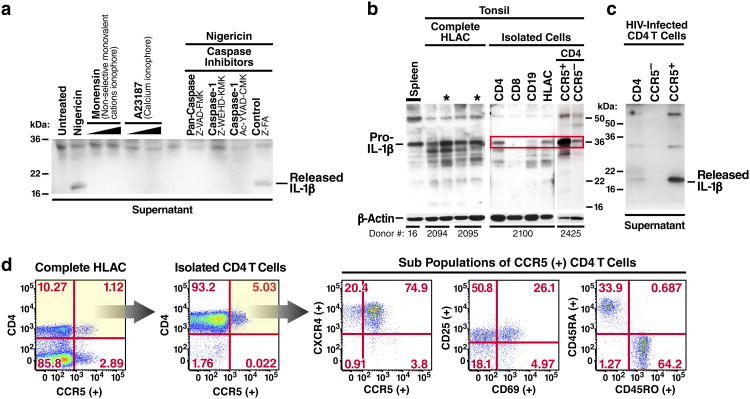Figure 2.
Lymphoid CD4 T cells are primed to mount an inflammatory response and constitutively express high-levels of pro-IL-1β. a. A secondary inflammatory stimulus by nigericin induces lymphoid CD4 T cells to process and release bioactive IL-1β. Supernatants from cell cultures were filtered to remove all remaining cells and subjected to SDS-PAGE immunoblotting analyses for bioactive 17-kDa IL-1β. b. High levels of constitutive pro-IL-1β are selectively expressed in lymphoid CD4 T cells. Levels of intracellular pro-IL-1β were assessed in HLACs from fresh tonsils or spleen tissue from different donors. Asterisks indicate samples in which dead cells were removed. CD4 T cells were positively isolated from HLAC. Cells were lysed and analyzed for pro-IL-1β expression. c. Nearly all bioactive IL-1β produced by HIV-infected lymphoid CD4 T cells is released from CCR5-expressing cells. Indicated CD4 T-cell populations were isolated from HLAC and infected with HIV-1. Supernatants of cultures were filtered and analyzed for bioactive 17-kDa IL-1β. d. HLACs were characterized for expression of memory and activation markers by flow cytometry. The majority of CCR5-expressing CD4 T lymphocytes exhibit a memory phenotype. All CCR5-expressing CD4 T cells co-express the CXCR4 receptor.

